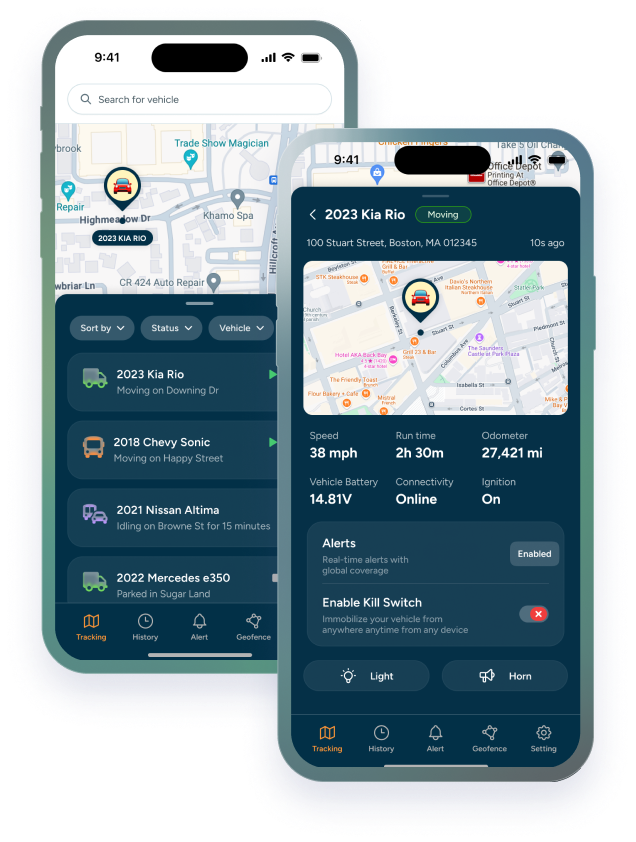In the world of commercial transportation and logistics, the terms HGV (Heavy Goods Vehicle) and LGV (Large Goods Vehicle) are frequently used, often interchangeably. These vehicles are the backbone of the logistics industry, ensuring the efficient and timely delivery of goods across regions. This article will delve into what HGVs and LGVs are, their essential uses, and their pivotal role in logistics, all while highlighting how technologies like Trackhawk GPS enhance their operational efficiency.
What is a Heavy Goods Vehicle (HGV)?
A Heavy Goods Vehicle (HGV), also known in some regions as a large goods vehicle, refers to any commercial trucks or vehicles designed to carry heavy loads, typically with a gross vehicle weight of over 3.5 tonnes. HGVs are crucial in the transport and logistics sector, moving goods from warehouses to retail outlets, and everything in between. The term HGV is widely used in the United Kingdom and the European Union, covering a range of vehicles from flatbed trucks to tankers, each classified under different HGV classes based on their weight and size.
HGV Classes and Licensing
To operate an HGV, drivers must undergo specialized HGV training and pass both theory and practical tests to obtain the appropriate driving licence and Driver CPC (Certificate of Professional Competence). This rigorous training ensures that HGV drivers can safely navigate the complexities of handling large, heavy vehicles across diverse terrains and conditions.
The Definition of Large Goods Vehicle (LGV)
LGV stands for Large Goods Vehicle, a term that historically referred to vehicles with a gross vehicle weight of between 3.5 and 7.5 tonnes. However, in modern usage, especially in the UK, LGV and HGV are terms used interchangeably to describe any vehicle over 3.5 tonnes used for goods transport. This can sometimes cause confusion, as “light goods vehicles” (light goods vehicle) – another category of commercial vehicles – are designed for lighter loads, typically under 3.5 tonnes.
LGVs in Fleet Management
In the context of fleet management, understanding the difference between HGV and LGV classifications helps in optimizing fleet operations, ensuring compliance with regulations, and selecting the right vehicles for specific logistic needs. Fleet managers leverage vehicles’ capabilities to maximize efficiency, whether through route planning, load optimization, or scheduling maintenance.
The Role of HGVs and LGVs in Logistics
HGVs and LGVs play a vital role in the logistics industry, enabling the movement of goods over short and long distances. Their importance has grown alongside the global expansion of supply chains, making them indispensable in today’s economy. From food and clothing to construction materials and machinery, these vehicles are responsible for ensuring that goods arrive safely and on time, contributing significantly to the smooth operation of the logistics and supply chain management.
The Impact of Technology on HGV and LGV Operations
Technological advancements, particularly GPS fleet tracking, have revolutionized how HGVs and LGVs are managed within fleets. Trackhawk GPS, for example, provides real-time visibility into vehicle locations, enabling more efficient route optimization and fleet tracking. This GPS fleet tracking capability helps fleet managers minimize delays, reduce fuel consumption, and improve overall fleet performance.
Enhancing HGV and LGV Fleet Efficiency with Trackhawk GPS
Integrating advanced fleet management solutions like Trackhawk GPS allows for streamlined operations of HGVs and LGVs. Features such as vehicle tracking, driver training monitoring, and maintenance scheduling are essential tools that help keep these vehicles on the road and functioning at their best. For fleets comprising HGVs and LGVs, such management software is invaluable in enhancing operational efficiency and driver safety.
Getting Started with Trackhawk GPS
For businesses that rely on HGVs and LGVs for their daily operations, adopting a robust fleet management system is a game-changer. If you’re looking to drive improvements in your fleet’s efficiency and want to experience what cutting-edge technology can offer, get in touch with Trackhawk GPS. Our team can provide a demo of our fleet management solutions, tailored to meet the specific needs of your HGV and LGV fleet.
Conclusion
HGVs and LGVs are more than just commercial vehicles; they are the lifeblood of the transport and logistics industry, facilitating the movement of goods across continents and within cities. Understanding the distinctions between these vehicles and leveraging the right technology for their management can significantly impact a company’s logistics operations. With the support of fleet management solutions like Trackhawk GPS, businesses can ensure their fleets are not just operational but optimized for maximum efficiency and reliability. In the ever-evolving landscape of logistics, staying ahead means embracing innovation and the numerous benefits it brings to HGV and LGV fleet management.

Comments